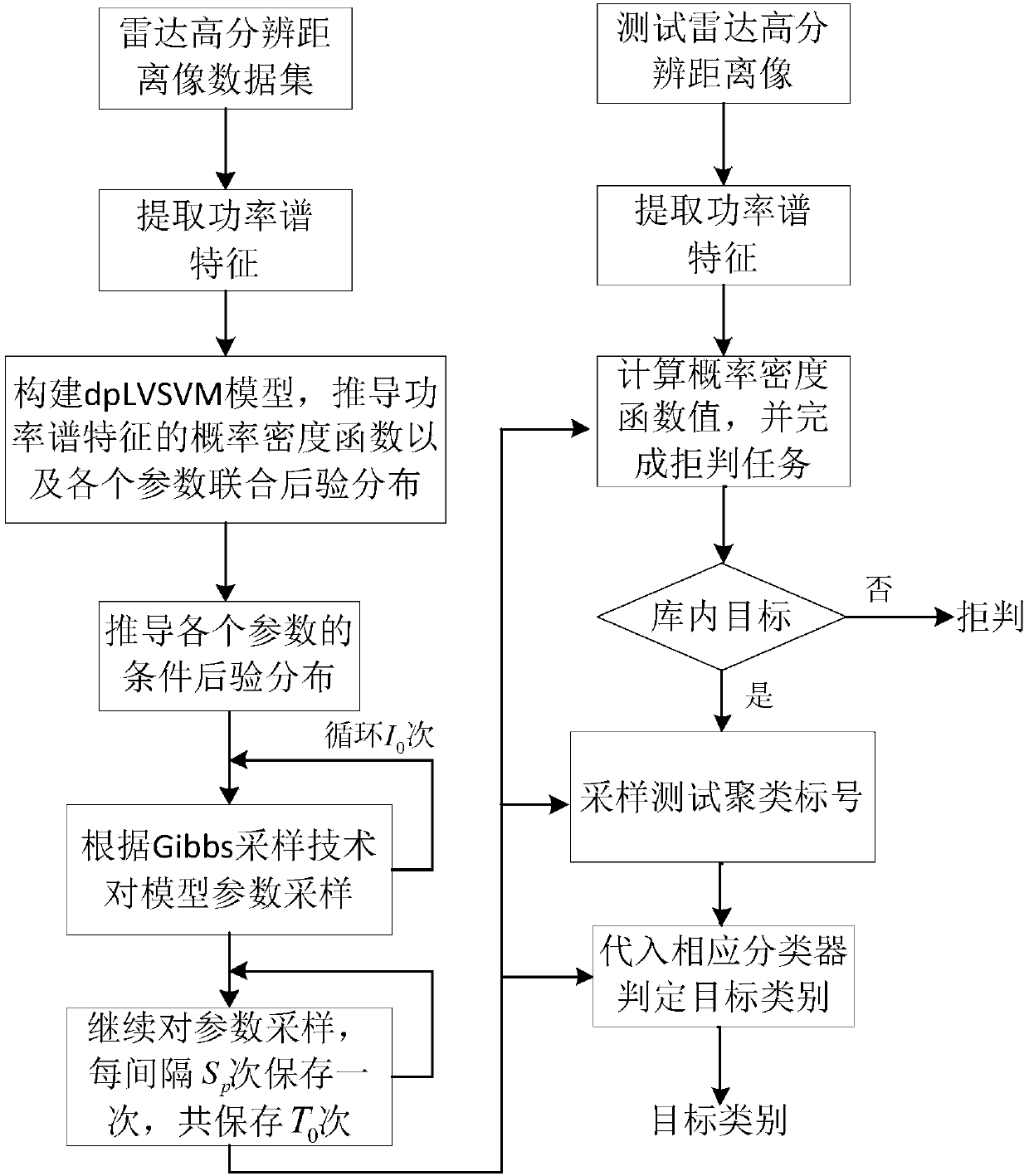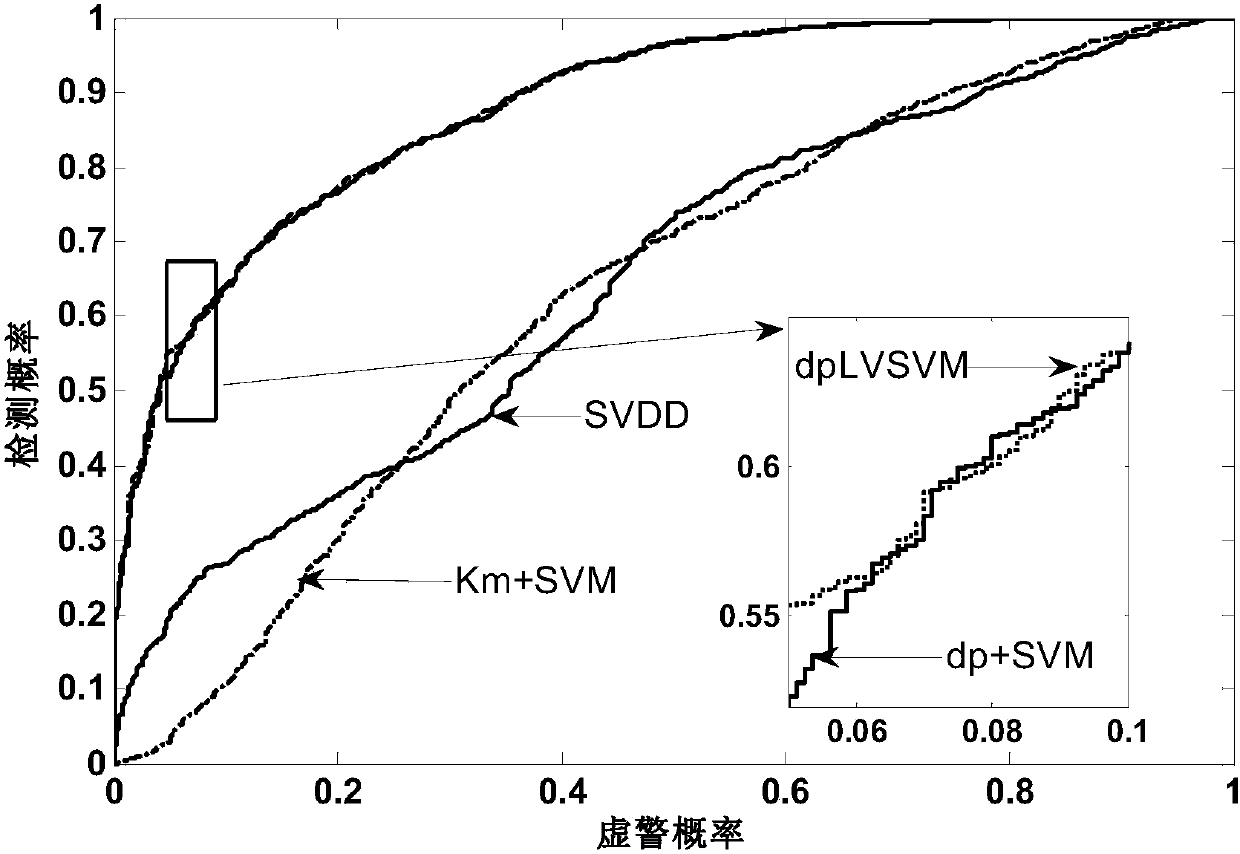Target recognition method of radar hrrp based on dplvsvm model
A target recognition and radar technology, applied in the radar field, can solve the problems of unsupervised clustering process, affecting classification performance, and difficult to ensure data separability.
- Summary
- Abstract
- Description
- Claims
- Application Information
AI Technical Summary
Problems solved by technology
Method used
Image
Examples
Embodiment Construction
[0080] refer to figure 1 , illustrate a kind of target recognition method of the radar HRRP based on dpLVSVM model of the present invention, its specific steps are as follows:
[0081] figure 1The flow of the entire recognition system is given, and it can be seen that the entire system includes two parts: the training phase (left part) and the testing phase (right part). Among them, the task of the training phase is to estimate the parameters of the dpLVSVM model. After the training phase, the task of the testing phase is to perform the rejection task first, then calculate the cluster to which the sample belongs according to the parameters obtained from the training, and finally output the category label of the target to complete the recognition. Task.
[0082] Step 1, the radar receives the high-resolution range profile HRRP of M categories of targets; then perform feature extraction on each high-resolution range profile to obtain the power spectrum feature x of the radar h...
PUM
 Login to View More
Login to View More Abstract
Description
Claims
Application Information
 Login to View More
Login to View More - Generate Ideas
- Intellectual Property
- Life Sciences
- Materials
- Tech Scout
- Unparalleled Data Quality
- Higher Quality Content
- 60% Fewer Hallucinations
Browse by: Latest US Patents, China's latest patents, Technical Efficacy Thesaurus, Application Domain, Technology Topic, Popular Technical Reports.
© 2025 PatSnap. All rights reserved.Legal|Privacy policy|Modern Slavery Act Transparency Statement|Sitemap|About US| Contact US: help@patsnap.com



